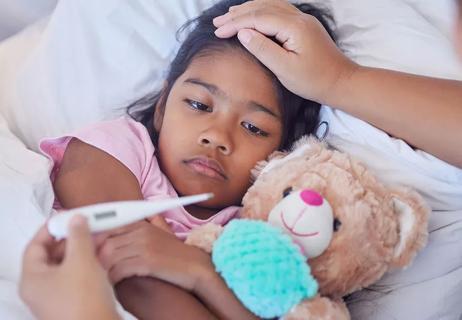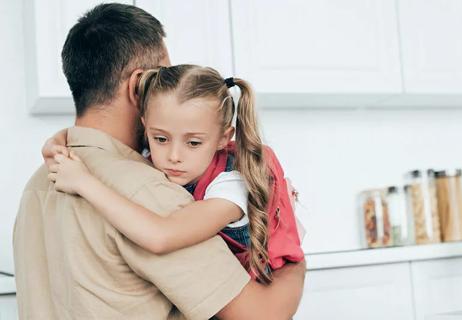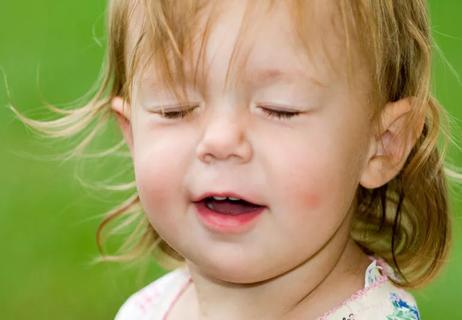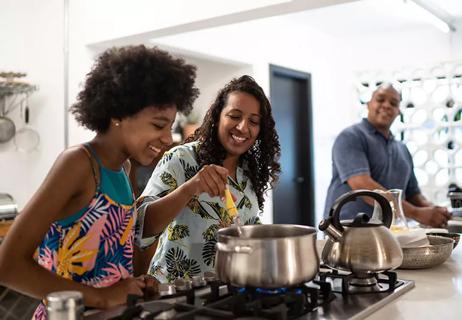Movement is also an important part of their school day

If you’re the parent or caretaker of a child who’s distance learning during the COVID-19 pandemic, you’ve probably heard this bit of advice: Designate a spot in your home for your child to do their schoolwork every day.
Advertisement
Cleveland Clinic is a non-profit academic medical center. Advertising on our site helps support our mission. We do not endorse non-Cleveland Clinic products or services. Policy
It’s good advice, to be sure. But it should come with a few caveats to help kids stay comfortable and avoid the aches and strains that can come from sitting at a computer for a good chunk of the day.
First, a child’s workspace should be tailored to their smaller size, says chiropractor Chad Adams, DC.
“Remember that children are not the same height as you, so thinking that you can put them at the kitchen table or at the desk that you work at, without any modifications, may be faulty,” he says.
They should also be getting up and moving from that space frequently — ideally at least every 20 to 30 minutes, Dr. Adams says. “You want them to ebb and flow into different postures depending on what they’re doing.”
Here’s how you can put that advice into action and keep your kids comfortable while they’re learning from home.
The human body is highly moldable, Dr. Adams says. Spending lots of time in unnatural positions can create tension in our muscles, ligaments and tendons.
“When we assume poor postures for long periods of time, we can actually change the shape of our internal structures,” Dr. Adams says. “How something is shaped determines what it can do, so if we start messing around with the shape of something, ultimately what it can do is also going to change.”
This can mean aches, pains and joint problems down the road.
Setting up a workspace that’s comfortable for your at-home learner doesn’t have to be overly complicated or expensive. Just consider these key areas:
Advertisement
While a well-thought-out workspace can help your child stay comfortable and focused on computer work, that doesn’t mean they have to stay at that one space all day.
In fact, they should not stay there all day, Dr. Adams says.
The human body is designed to move, so sitting for long periods of time can be tough on our bodies — and that goes for children, too. Encourage your child to stand up, take a break and move every 20 to 30 minutes.
“The movement doesn’t have to be anything specific — just think in three dimensions,” Dr. Adams recommends. “Rather than just looking from side to side to stretch the neck, draw circles with your neck. Do the same with your arms and wrists. Try to move your whole body in big, expressive 360-degree movements.”
If your child is working on something that doesn’t require a computer — such as flash cards or an art project — encourage them sit on the floor or on the couch, or to stand for a while. And don’t forget to incorporate longer breaks in the day for your child to run around.
“Keep it simple and remember that movement is the underlying theme here,” Dr. Adams says. “Try to move as much as possible, both in the environment and taking those breaks. Let them run around the house or outside and then get back to their class.”
Advertisement
Advertisement
Learn more about our editorial process.
Advertisement

Vomiting and fevers are a hard no — other symptoms are a judgment call

Requesting information about your school’s safety plan is so important

Ideas for keeping children engaged when school is happening at home

Because perfect isn’t possible during a pandemic

How to best handle classroom conflict

From allergies to anxiety, excessive blinking usually isn’t a concern

Kids typically get all the nutrients they need from food, but supplements can add peace of mind

Parents must intervene, in a productive way

Type 2 diabetes isn’t inevitable with these dietary changes

Applying a hot or cold compress can help with pain